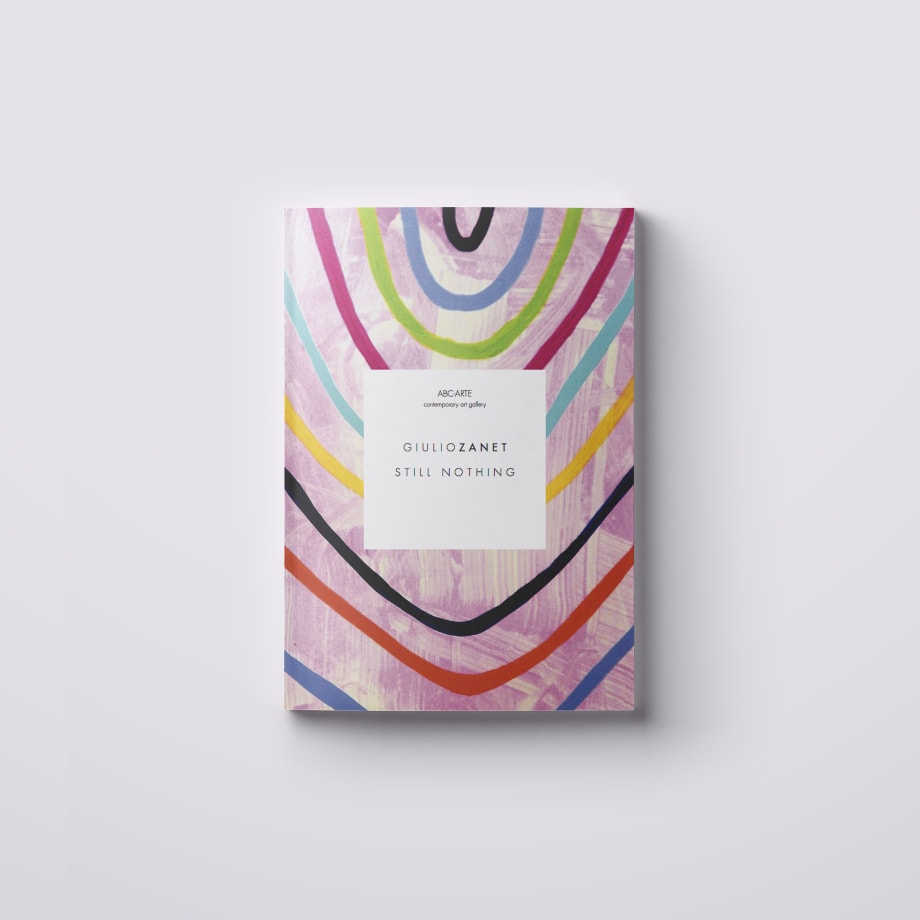Dimensions: 16x12
Pages: 48
ISBN: 9788895618098
Still Nothing
by Ivan Quaroni
"Painting must catch that connection between the needing of identification and the needing of abstraction."
(Carlo Carrà)
"Doubt is one of the names of intelligence."
(Jorge Louis Borges)
In the history of art, abstraction is an arrival point. Perhaps not the ultimate one, as it happened to Kazimir Malevič, who returned to the figure in his late works. It is anyway considered as an evolution, or progress, in the language of painting.
Almost all abstract painters started from figure. Alberto Magnelli, Arturo Bonfanti, Osvaldo Licini, to mention a few, had a figurative approach, which they improved through syntheses and sublimations. They organised their styles without almost any reference to the external reality and built a system of signs and intimate figures close to the immaterial world of ideas.
Giulio Zanet's artistic itinerary may be included in this group. As many others, he started to paint following the figurative tradition, even if, since the beginning, he was intolerant towards narrative structures to focus on a deconstructive concept of representation. Until recent times, this artist worked on deconstructed and disarticulted figures, exposing unlogically-connected events as it happened with the Neue Leipzig Schule and most of artistic movements coming from Eastern Europe.
Zanet used the codes of representation in a chaotic way. He wanted to avoid any narrative influence because he had no story to tell. His work has been exposed to the observer as a collection of un-connected elements and incongruous fragments. It was impossible to create a coherent and homogeneous vision of reality. His paintings raised questions because the duty of a logical reconstruction between inconsistent and dialectical images was assigned exclusively to the observer. Therefore, his first aniconic works inevitably came from the artist's awareness that there was inadequacy in figurative representations. This unsuitableness becomes evident when looking at the excess of images and visual narrations present in contemporary culture, from the new media to advertising.
The constant exposure to information and the extensive use of superficial storytelling (and meta-storytelling) must have induced Giulo Zanet to reject figurative representation to save the practice of painting.
It is very important to underline how the practice of painting is considered by this artist as an uncertain and unstable tool to discover the inner and outer world. Through painting, the artist experiences himself and the world around him. If you consider painting as a cognitive procedure, Giulo Zanet's research acquires a relevant anthopological meaning. It is not only a cultural opposition to the invasion by mass-media, but also a persuasive alternative option to traditional storytelling.
In his research, the progressive transition from deconstructured representation to hybrid abstraction is driven by the desire to build a style to perform the vagueness and inaccuracy of existential experience. It's a dirty, gestural and uncoherent style. Vagueness and inaccuracy are elements of a way of life made by series of attempts and unavoidable mistakes and failures. The title of the exhibition, Still Nothing, looks like a acknowledgement of failure, a perpetual collapse, through which cognitive uncertainty is established as an existential value in a Socratic way. The logic of inaccuracy dominates Zanet's painting style, even when pattern and texture prevail and destroy any possible narration. In his paintings, images are fixed through plastic or flat structures, lines bundle up in Cartesian orders and vibrate like waves of energy through vivid diamonds. The artist is not attracted by the analytical precision of these uncertain shapes. Actually, his ambiguous geometries and irregular patterns symbolize an attempt to place order into chaos, where signs and gestures emerge from a jumble background, They contain this confused entropic bunch of vital experience.
Zanet does not work like Gerhard Richter, whose programmatic approach investigated the image created by the media together with the tautological forms af abstraction. Zanet has an experimental and unpredictable attitude, he looks into reality pushed by a honest presumption of failure and, at the same time, he is aware he will need to repeat his challenge every time. He made a statement out of his peculiar tendency: "People talk so much about the beauty of confidence", wrote Oscar Wilde in his De Profundis, "They seem to entirely ignore the much more subtle beauty of doubt."
Considering the whole history and evolution of painting, nothing has ever been more fertile and desiderable than uncertainty and doubt.

